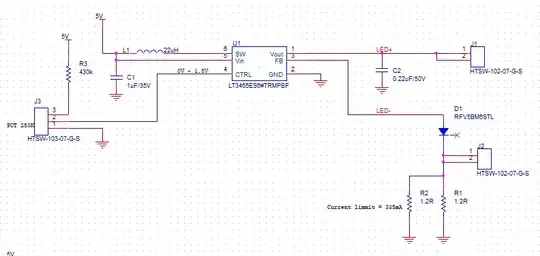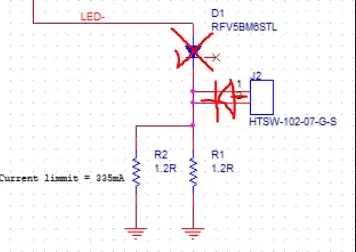I'm looking at driving an LEDs, maximum 6 LEDs in series (can be less.)
I have used the LT3465ES6 for this job.
I have calculated the needed current limit resistor and didn't get the needed results (tested with 4 LEDs 50 mA.)
The calculation is:
Input voltage is 5 V.
In the schematic I have added a high current diode in case the operator shorts the LED+ and LED- signals (this is for protection, the diode acts like an LED (Vf=2.9.)
My LEDs are 2.9 V and can stand 1100 mA (I need 350 mA maximum.)
The control potentiometer is 250K ohm.
J1 and J2 are outputs for the LEDs.



335mA is too much current since the part is not guaranteed to be able to supply that.
– Troutdog Feb 24 '22 at 18:31